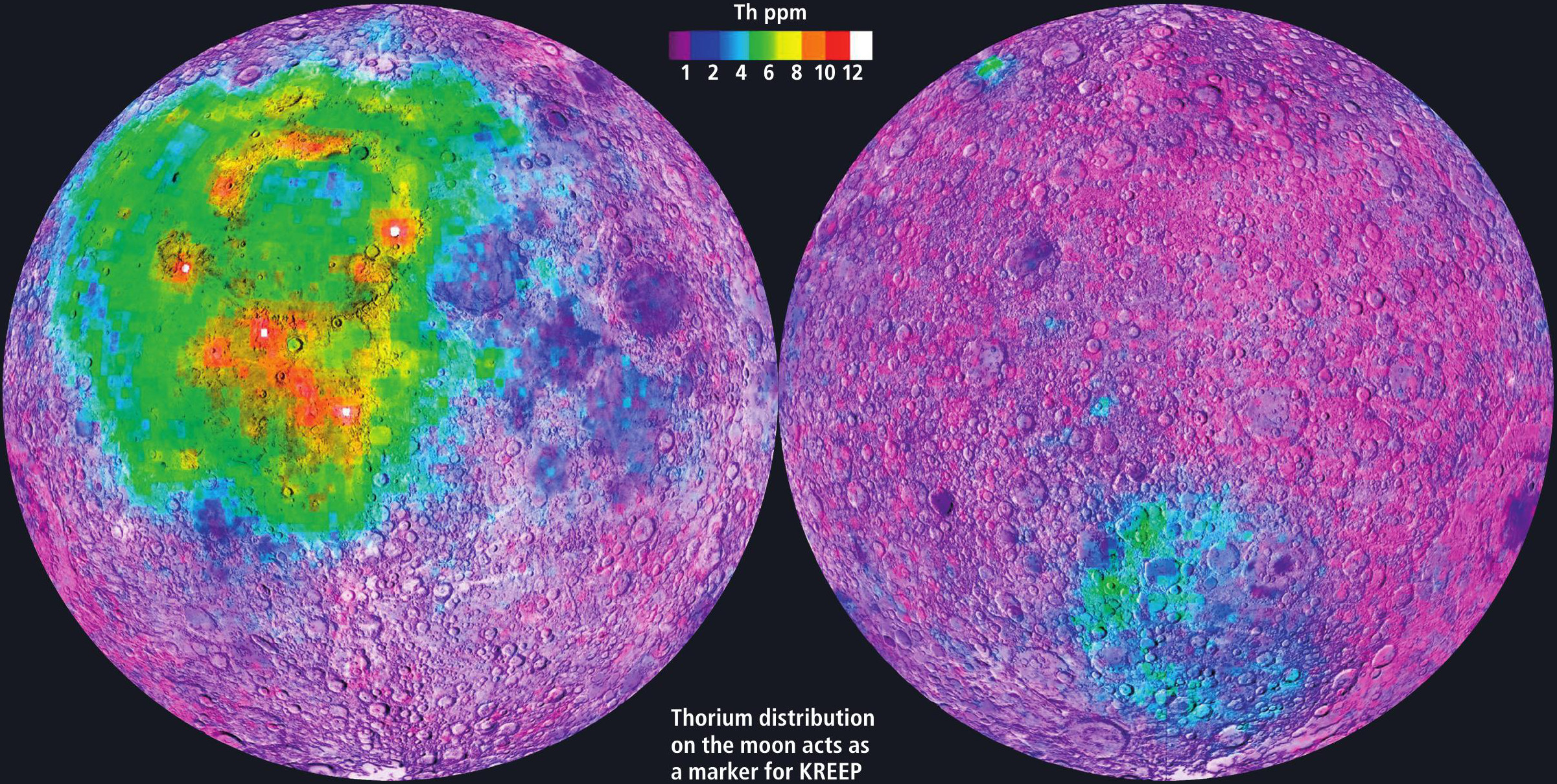
Humans have always been fascinated by the Moon. It seems close enough to study, but far enough away for celestial intrigue. By the seventeenth century, scientists had begun comparing the glowing orb in the sky to terrestrial ground. They could see that the Moon did not have an even surface, and identified the darker and smoother parts as maria (seas) and the brighter and rougher highland parts as terrae (lands).
Scientists soon discovered that there were no ‘seas’ containing water, but these historic names remained. Differences in chemical composition between the two regions were examined. In 1966 an orbiting gamma-ray spectrometer found elements suggesting that basalt (a type of volcanic rock) resided in the maria. More recently, samples taken from the lunar surface and measurements from orbiting instruments have shown the varying distribution of elements in the maria and terrae. For example, on average, the terrae contain one third as much iron as the maria.
Your organisation does not have access to this article.
Sign up today to give your students the edge they need to achieve their best grades with subject expertise
Subscribe




